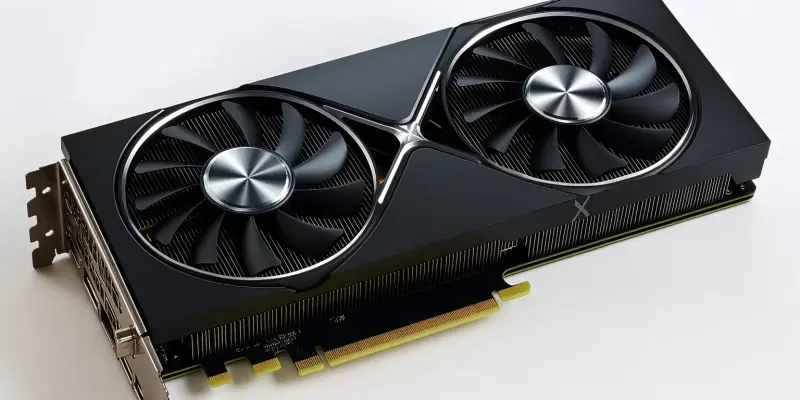In a major development for tech enthusiasts, leaked details have surfaced about Nvidia’s next-generation mobile RTX 5000 graphics cards, which are set to power new Asus laptops in early 2025. These anticipated laptops will also integrate Intel’s latest Arrow Lake CPUs, promising to revolutionize mobile computing performance. The leaks offer a comprehensive glimpse into these forthcoming devices, revealing critical information such as memory capacities, wattage, and CPU pairings, well ahead of their official announcement. As the tech community eagerly awaits these releases, it’s clear that both Nvidia and Intel aim to set new benchmarks in mobile GPU and CPU capabilities.
Advanced Graphics with Nvidia RTX 5000 Series
The RTX 5000 lineup is expected to significantly elevate the gaming and professional graphics experience in laptops. The flagship models, the RTX 5090 and 5080, will each boast 16GB of VRAM, marking a substantial upgrade, particularly for the RTX 5080, which moves from its predecessor’s 12GB. This increase in VRAM is a crucial update, providing enhanced performance for intensive tasks such as gaming, video editing, and 3D rendering. The RTX 5070 Ti, positioned just below the top-tier models, will feature 12GB of VRAM, ensuring seamless support for demanding applications.
In an effort to deliver consistent improvements across the entire RTX 5000 series, Nvidia has placed emphasis even on entry and mid-level GPUs. Models below the 5070 Ti, like the entry-level RTX 5050, will see an upgrade from the previous 6GB to 8GB of VRAM. This adjustment represents a step forward in assuring that users at all budget levels can experience higher performance and improved graphics. Additionally, all RTX 5000 cards, whether mobile or desktop, will leverage the next-gen GDDR7 VRAM, further boosting overall system responsiveness and efficiency.
Enhanced Power Efficiency and Performance
Power efficiency is another area where Nvidia’s new GPUs show notable advancements. The top-tier laptop GPUs, namely the RTX 5090 and 5080, will have a maximum power draw of 175W. The step-down RTX 5070 Ti will use 140W, and while details on the power consumption for lesser models remain limited, it is known that the RTX 5060 will draw approximately 115W. These figures hint at an impressive balance between performance and energy efficiency in the upcoming laptops, ensuring high-end capabilities without compromising battery life.
Contrary to earlier reports suggesting the use of older Intel processors, the new laptops will feature the latest Intel Core Ultra 9 and AMD Ryzen 9 CPUs. This includes models such as the Core Ultra 9 285H, 285HX, 275HX, and Ryzen 9 7945HX and 7940HX. These advanced processors are tailor-made for high-performance computing tasks, aiming to offer users unparalleled speed and efficiency in various demanding applications. Additionally, flagship models will be equipped with high-refresh-rate displays, providing options of either 2K at 240Hz or 1080p at the same refresh rate. These displays will appeal particularly to gamers and creative professionals, delivering smoother visuals and more immersive experiences.
Anticipated Advancements in Ryzen AI and Integrated GPU Performance
In an exciting development for tech enthusiasts, leaked information has emerged about Nvidia’s upcoming mobile RTX 5000 graphics cards. These advanced GPUs are expected to drive the performance of new Asus laptops set for release in early 2025. Furthermore, these eagerly anticipated laptops will also feature Intel’s newest Arrow Lake CPUs, indicating a significant leap in mobile computing power. The leaks provide detailed insights into these future devices, including crucial aspects like memory capacities, power consumption, and CPU pairings, all before their official reveal. The tech community is buzzing with excitement as these details suggest that both Nvidia and Intel are poised to redefine standards in mobile GPU and CPU technologies. As gamers and professionals alike look forward to these innovations, the collaboration between Nvidia and Intel seems set to elevate the capabilities of portable computing to new heights. This development marks a significant milestone, promising enhanced performance and efficiency in the next generation of mobile devices.

